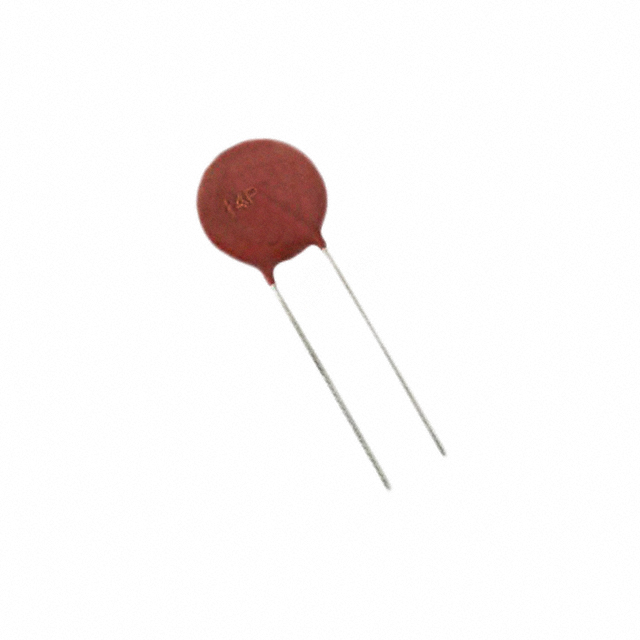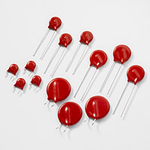
NC Formula Semiconductor: The Blockbuster Guide You Didn’t Know You Needed
Global electronic component supplier ERSAELECTRONICS: Rich inventory for one-stop shopping. Inquire easily, and receive fast, customized solutions and quotes.
If Dune taught us that “the spice must flow,” then semiconductor design whispers: “the carriers must flow.” And to predict how many carriers can flow, you need the NC formula. Welcome to your fun, no-nonsense tour of the nc formula semiconductor world—packed with real design takeaways, movie callbacks, and component-level relevance.
1) What “NC Formula Semiconductor” Really Means (And Why You Should Care)
In semiconductor physics, Nc (often styled “Nc” or “Nc”) is the effective density of states in the conduction band. When people say “nc formula semiconductor”, they’re typically hunting for the precise expression that tells us how many available electronic states exist near the conduction band edge for electrons to occupy. It’s not just ivory-tower theory—Nc is the hinge that connects material science to everyday component choices: leakage in your diodes, threshold drift in your MOSFETs, temperature quirks in your sensors, even the noise floor in analog front ends. If you like your designs stable and your simulations believable, Nc is your quiet co-star.
Think of your favorite ensemble show—say, Stranger Things. The band structure is Hawkins, the band gap is the border to the Upside Down, and Nc is the number of “tickets” for electrons to cross into the action. More tickets (bigger Nc) means more potential carriers at a given temperature. Fewer tickets? The cast thins out—leakage shrinks, but so might your device’s responsiveness. The plot twist: temperature changes how many tickets are printed.
2) From Band Structure to BOM: The Road to Nc
The band structure of a semiconductor is the map of allowed energies for electrons. The valence band is the comfy suburban cul-de-sac; the conduction band is the neon downtown. The void between them—the bandgap—is the toll road. An electron needs energy to jump from valence to conduction, and once it’s there, it can contribute to conduction like a caffeinated extra in a Fast & Furious chase.
In a parabolic band approximation (our standard pilot episode), the conduction band near its minimum looks like a simple parabola. The curvature of that parabola is tied to the effective mass \(m_e^*\), which is different from the free-electron mass because crystal lattices aren’t empty space. The effective mass and temperature together shape the number of states available for electrons. That “number of states near the band edge,” adjusted for thermal smearing, is exactly what the nc formula semiconductor keyword points to: the mathematical expression for Nc.
3) The Nc Formula (Effective Density of States) Explained
In most textbooks and device models, the nc formula for the effective density of states in the conduction band is:
\[ N_c = 2 \left(\frac{2\pi m_e^* k T}{h^2}\right)^{\frac{3}{2}} \]
Where:
- \(m_e^*\) is the electron effective mass in the material,
- \(k\) is Boltzmann’s constant,
- \(T\) is absolute temperature in kelvins,
- \(h\) is Planck’s constant,
- The factor 2 accounts for spin degeneracy.
Importantly, \(N_c \propto T^{3/2}\). As temperature rises, the “state buffet” gets bigger. That change flows into the intrinsic concentration \(n_i\), which we’ll get to in a moment.
For many materials, you’ll see a compact empirical form used in design handbooks:
\[ N_c(T) \approx N_{c0} \left(\frac{T}{300\ \text{K}}\right)^{3/2} \]
where \(N_{c0}\) is the tabulated value at 300 K. The exact number depends on the material’s effective mass (and valley degeneracy if applicable).
.png?x-oss-process=image/auto-orient,1/quality,q_70/format,webp)
4) Nc vs Nv, and the Intrinsic Concentration ni
The valence band has its own effective density of states, \(N_v\), with a similar form:
\[ N_v = 2 \left(\frac{2\pi m_h^* k T}{h^2}\right)^{\frac{3}{2}} \]
where \(m_h^*\) is the hole effective mass. Together, \(N_c\) and \(N_v\) determine the intrinsic carrier concentration:
\[ n_i = \sqrt{N_c N_v}\ \exp\!\left(-\frac{E_g}{2kT}\right) \]
Here \(E_g\) is the bandgap. If you’ve ever watched Oppenheimer and thought “small changes, massive consequences,” that’s \(n_i\). Because of the exponential term, a tiny shift in \(E_g\) or \(T\) can change \(n_i\) by orders of magnitude. Since leakage, dark current, and some thresholds scale with \(n_i\), your design can go from crisp to mushy if you ignore the exponential.
- \(N_c\) and \(N_v\) set the stage; \(E_g\) pulls the big lever.
- \(n_i\) rises sharply with temperature, because both \(N_c, N_v\) grow and the exponential relaxes.
- Leakage in diodes/sensors often mirrors \(n_i(T)\). Your thermal design isn’t optional.
5) Doping 101: From “Mild-Mannered” Silicon to Super-Charged Devices
Add donors (n-type) or acceptors (p-type) and you tilt the cast list. In an n-type region, the electron concentration \(n\) becomes much larger than \(p\), and vice versa in p-type. At non-degenerate doping levels (think: not absurdly high), the Boltzmann approximation holds and you can use \[ n \approx N_c \exp\!\left(-\frac{E_c - E_F}{kT}\right) \] where \(E_c\) is the conduction band edge and \(E_F\) the Fermi level.
In the freeze-out regime (low temperature), dopants aren’t fully ionized, so your simple assumptions break. In the degenerate regime (very high doping), the Fermi level barges into the band like a Marvel cameo, and you need Fermi-Dirac integrals rather than neat Boltzmann exponentials.
Design translation
- Low-T sensor acting “sleepy”? You may be in partial ionization (freeze-out).
- Crazy-high doping in source/drain? Expect degenerate behavior; your Nc-based Boltzmann shortcuts won’t cut it.
- At moderate doping and room temp, Nc-based exponentials are your fast sanity checks.
Pop-culture shortcut
Like The Avengers assemble, dopants call in extra carriers. Not too few (no show), not too many (crashes the venue), just right (box-office gold).
6) Why Nc Shows Up in Real Components (Diodes, BJTs, MOSFETs, GaN/SiC)
The nc formula semiconductor keyword isn’t dusty theory. It drives how devices leak, switch, and age. A few everyday touchpoints:
6.1 Diodes & Photodiodes
- Leakage current grows with \(n_i\), which in turn depends on \(N_c\), \(N_v\), \(E_g\), and \(T\).
- Dark current in imaging or photodiodes often tracks \(n_i\). That means your low-light SNR hinges on the same physics.
6.2 BJTs
- Collector leakage and thermal runaway risk relate to \(n_i(T)\).
- At temperature, beta (\(\beta\)) shifts and so do bias networks; Nc sits in the upstream math.
6.3 MOSFETs (Si, SiC, GaN)
- Threshold voltage temperature drift is influenced by intrinsic properties that Nc helps quantify.
- Subthreshold slope and off-state leakage: the \(n_i\) exponential is your hidden antagonist.
6.4 Sensors (Thermistors, Gas, Bio)
- Semiconductor sensors built on narrow-gap materials show strong \(n_i(T)\) variation; expect calibration curves that echo Nc’s \(T^{3/2}\) trend plus the bandgap exponential.
.png?x-oss-process=image/auto-orient,1/quality,q_70/format,webp)
7) Material Cheat-Sheet: Silicon, GaAs, GaN, SiC & Friends
Below is a handy qualitative table (values representative at ~300 K; always consult your process or material vendor for precise numbers):
| Material | Bandgap \(E_g\) (eV) | Relative \(N_c\) @300K | Typical Use | Design Notes |
|---|---|---|---|---|
| Silicon (Si) | ~1.12 | Baseline (well-studied) | General ICs, power up to mid-range | Great data availability; moderate leakage; mature models. |
| Gallium Arsenide (GaAs) | ~1.42 | Differs due to effective mass/valleys | RF/microwave, high-speed analog | High mobility; RF darlings; pay attention to surface states. |
| Silicon Carbide (SiC) | ~3.2 | Material-dependent; wide bandgap effects | High-voltage power electronics | Low intrinsic carriers; excellent high-T performance; robust. |
| Gallium Nitride (GaN) | ~3.4 | Material-dependent; polarization effects matter | RF power, fast SMPS | Very low \(n_i\) at 300 K; watch traps and thermal layout. |
| Germanium (Ge) | ~0.66 | Tends higher \(n_i\) at 300 K | IR detectors, certain analog niches | Leakage can grow fast with T; nice for low-barrier sensing. |
Feel the theme? Wider bandgaps (SiC, GaN) keep \(n_i\) tiny at room temperature, which is fantastic for off-state behavior and high-temperature operation. Your Nc depends on effective mass and valley physics; your ni depends also on \(E_g\). Together they set the tone for leakage, breakdown margins, and thermal limits.
8) How to Model Nc in SPICE/TCAD & Back-of-Envelope Checks
8.1 SPICE/Compact Models
Most compact models (BSIM for MOS, Gummel-Poon for BJTs, etc.) bury Nc inside temperature and material parameter sets. You won’t directly type in \(N_c\), but you’ll feel its presence in ni(T)
8.2 TCAD
In device TCAD, you can specify material parameters explicitly—effective masses, valley degeneracies, and band structures—so \(N_c\) and \(N_v\) drop out of the physics correctly. If you switch materials (Si → GaN) or investigate strain, \(N_c\) can shift. It’s your “pop-out menu” to check the realism of your simulations.
8.3 Back-of-Envelope
For quick estimates, use:
\[ N_c(T) \approx N_{c0}\left(\frac{T}{300\ \text{K}}\right)^{3/2}, \quad n_i \approx \sqrt{N_c N_v}\ \exp\!\left(-\frac{E_g}{2kT}\right) \]
If a data sheet’s leakage trend vs. temperature seems off by an order of magnitude or flips sign in Arrhenius space, your internal physicist should raise an eyebrow. The nc formula semiconductor framework is your lie detector.
9) Lab-Practical: Estimating ni and Sanity-Checking Data Sheets
Suppose you’re evaluating two rectifiers: one Si, one SiC. At 300 K, the Si device lists a small leakage; the SiC one is even smaller. Heat both to 150 °C. If the SiC’s leakage rises only modestly compared with Si, that’s the wide-bandgap advantage—lower \(n_i\) thanks to large \(E_g\), with Nc and Nv playing supporting roles.
9.1 A Worked Sketch (Room-Temp Silicon)
- Use tabulated \(N_{c0}, N_{v0}\) for Si at 300 K (reference values from literature).
- Compute \(n_i \approx \sqrt{N_c N_v} \exp(-E_g/2kT)\).
- Compare your estimate with textbook \(n_i\) for Si at 300 K as a sanity check.
If your estimate is way off, revisit constants (units trip everyone!) and whether you used the correct effective masses. Remember \(N_c, N_v \propto T^{3/2}\).
9.2 When the Plot Looks Weird
- Kinks or non-Arrhenius behavior can mean traps or generation-recombination centers, not just pristine Nc/Nv physics.
- In thin-film or compound materials, non-parabolic bands alter the effective mass with energy.
- Contact and package effects can masquerade as intrinsic temperature physics.
![]()
10) Edge Cases: Degenerate Doping, Non-Parabolic Bands & “NC ≠ Negative Capacitance”
Three caveats to keep your design story coherent:
- Degenerate doping: When doping is so high the Fermi level enters the band, replace Boltzmann approximations with Fermi-Dirac integrals. Nc still matters, but the math wearing it changes outfits.
- Non-parabolic bands: In some materials (certain III-V, high fields), the simple parabolic model bends. Effective mass becomes energy-dependent, and your compact “Nc” may need corrections or a different model.
- NC ≠ Negative Capacitance: In ferroelectric FET conversations, “NC” often means negative capacitance. That’s a different plot entirely. Our nc formula semiconductor here is the effective density of states—no ferroelectric drama.
11) Glossary & Save-It-For-Later Notes
- Nc (effective density of states): Number of available states near the conduction band edge; \( \propto T^{3/2} \).
- Nv: Effective density of states in the valence band.
- ni: Intrinsic carrier concentration \(=\sqrt{N_c N_v}\exp(-E_g/2kT)\).
- Effective mass (m*): A parameter encoding how electrons/holes respond in a crystal.
- Degenerate doping: Doping high enough that Fermi level enters a band; Boltzmann no longer applies.
- Bandgap (Eg): Energy gap between valence and conduction bands.
- Compact model: SPICE-style device model used in circuit simulators.














.png?x-oss-process=image/format,webp/resize,h_32)










